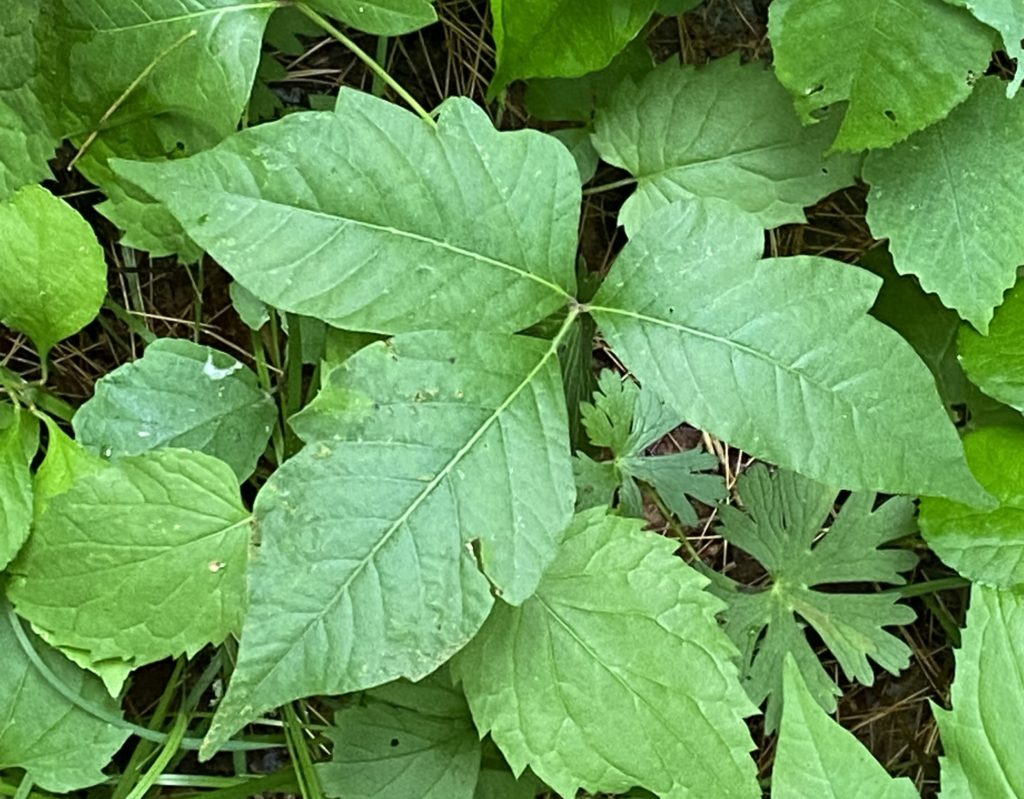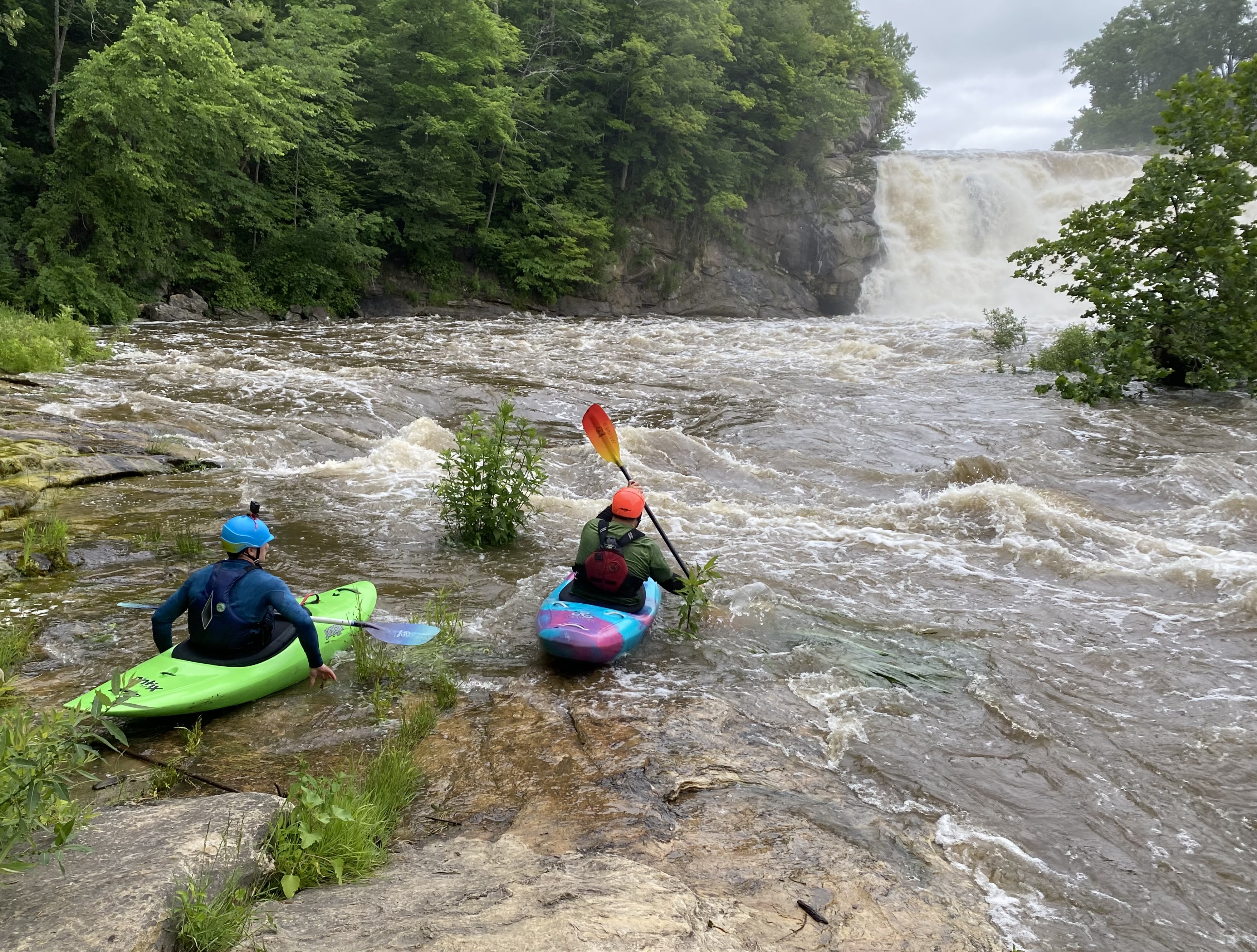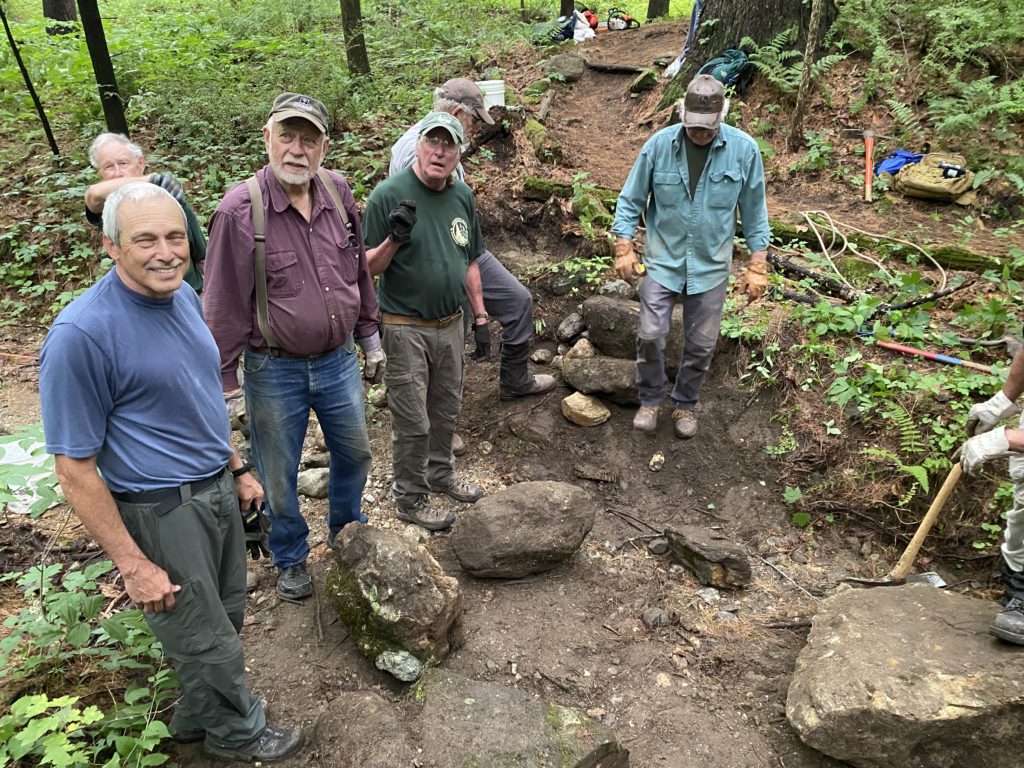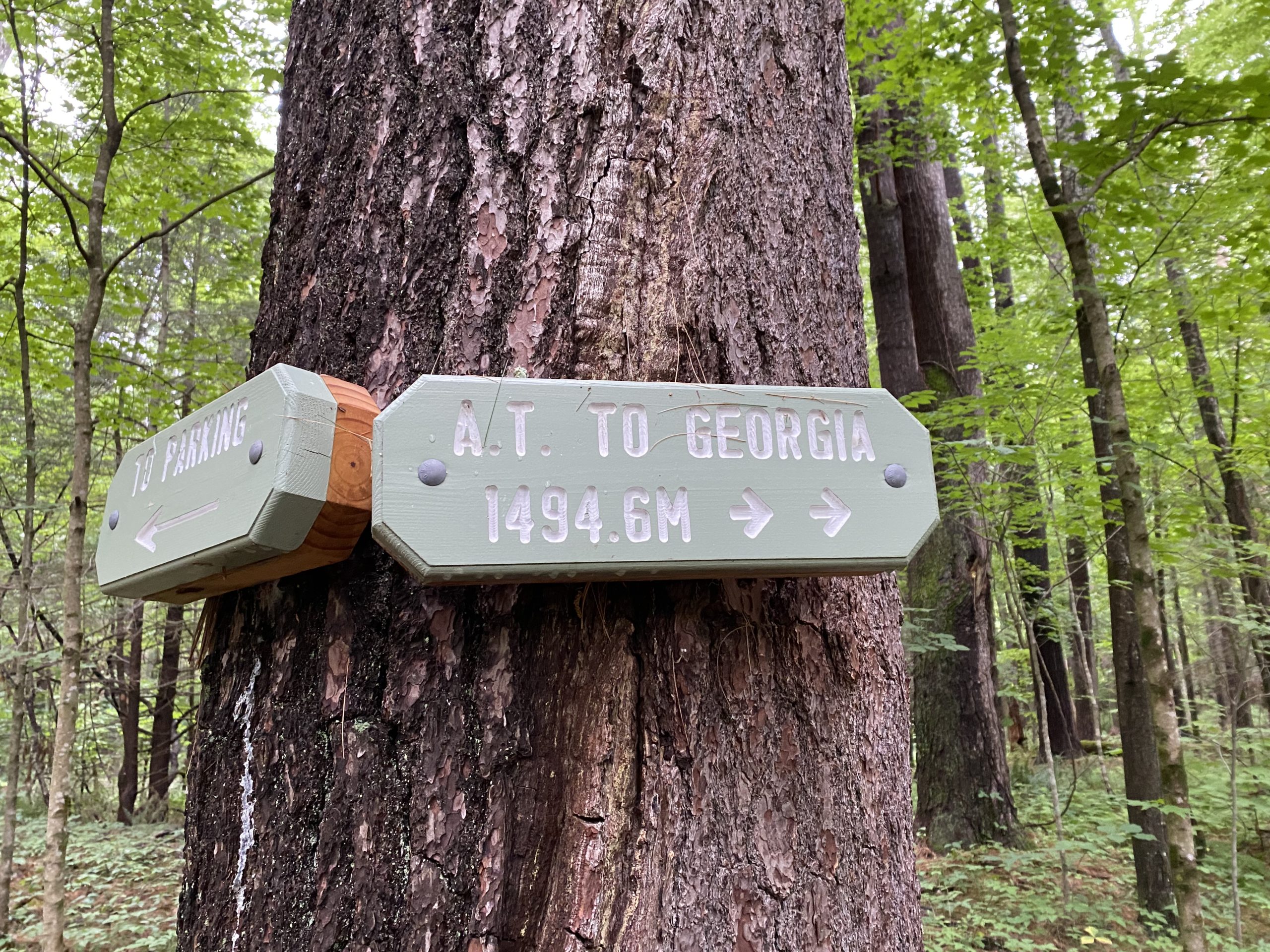I’m going to talk about a lovely drzzly walk and how to prevent poison ivy.
We were supposed to do either a long dayhike or a short backpack this weekend, but it’s been raining for days and today’s forecast was for more. That’s something section hiking does, especially when you are close to home: it lets you avoid bad weather. But we still really (really really) wanted to get at least some hiking in, rain or not, so we picked the best weather forecast and a short three-mile stretch not too far from home, near the Housatonic River between Fall’s Village, Connecticut and Lime Rock (where the racetrack is). There’s not much misery you can get into in a short three-mile hike — although “three-hour tour” did come to mind.
Recognizing Poison Ivy
The other challenge today was the poison ivy. We haven’t had much poison ivy thus far. It seems to have an altitude-latitude threshold — you don’t find it at the higher elevations and northernmost parts of the A.T. — and we haven’t seen much of it on the ridges in Massachusetts, either. But at river level in Connecticut, it was a whole different story. I am extremely allergic, so I had my eyes pretty much stuck at ground level. In some cases, the leaves were waving into the trail.
The drizzle meant that I got to try out my new OR Pertex jacket… So far all I can say was that I wore it more to fend off a chill than against much in the way of rain — the drizzle we got amounted to nothing much. It was comfortable and seemed to “breathe.” Rain gear in warm temperatures is always a tradeoff — do you get wet from rain or wet from sweat? I’ll review the Pertex more thoroughly after I’ve used it more, but at the moment it seems like a good choice for summer. It’s extemely light and compact.
Here’s what it looks like. It can grow as ground cover, as a shrub, and as a vine with reddish rootlets that cling to tree trunks. The oil can come from any part of the plant — bare stems in winter, leaves, berries. Note the asymmetrical shape of the leaves — usually unevenly lobbed on one side and flatter on the other. The three leaves don’t come out of the same point on the stem: the two on either side are right across from each other, right off the main stem, and the one in the middle comes off of its own short stem. I’m sure there are scientific botanical words for all this but I don’t know them, What i do know is to stay away!

The rash is your skin’s reaction to an oil called erushiol, which is found in poison ivy, poison oak, and poison sumac. The oil can adhere to your footwear, any clothing that comes in contact with it, or even your trekking poles, so it’s important to stay away. I try to make a habit of walking in the center of trails, and avoid touching plants overhanging the trail — often (as in the picture above) poison ivy is surrounded by other vegetation and can be hard to spot.
If you come into contact with it, treat the part of your skin that the plant touched as though you spilled thick, oily paint on yourself and scrub as hard as you can. Products like Technu (a soap designed to remove urushiol from your skin) help — but so does regular old soap. The most important thing is scrubbing with a damp, rough wash cloth. Check out this Youtube video for more.
Watching the Kayakers
Other than that, our short little jaunt was easy and lovely with no noticeable elevation gain, smooth trail, and dramatic views of the river — along with two kayakers who were riding the rapids just downstream of the falls pouring out of the dam.

And Thanking the Volunteers
We also saw a large group of trail volunteers wrestling huge boulders into a bridge and rock staircase. Sometimes we hikers think we are doing the hard work…. But each of these rocks being wrested into position weights 100 pounds or more.

Not bad for a rainy day!
